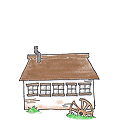
 1
1









 1
1




Yes, I'm that David The Good. My books are here: http://amzn.to/2kYcCKp. My daily site is here http://www.thesurvivalgardener.com and my awesome videos are here https://www.youtube.com/subscription_center?add_user=davidthegood




www.thehappypermaculturalist.wordpress.com





















davidpitman wrote:
(I'm new here!)
I wrote a short essay for a class at school.
I'd love for you guys to read it and let me know what you think!
I can send it in .pdf
Thanks,
David





www.thehappypermaculturalist.wordpress.com
















yurt rentals ° permaculture ° sculptures ° paleotechnics ° resource guide ° whitewater kayak camping how-to
www.earthenexposure.com








Best luck: satisfaction
Greatest curse, greed
 1
1




Dave's SKIP BB's / Welcome to Permies! / Permaculture Resources / Dave's Boot Adventures & Longview Projects















|
A nature documentary filmed entirely in a pet store. This tiny ad was in an aquarium
FREE Perma Veggies Book! - Learn how to grow the most delicious and nutritious food with the least amount of work.
https://permies.com/t/238620/perennial-vegetables/FREE-Perma-Veggies-Book
|





